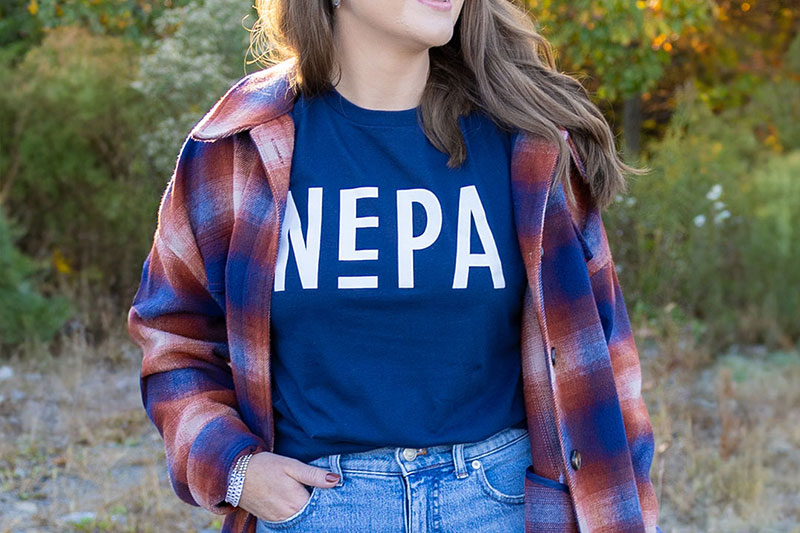Foraging for dinner requires a level of expertise to make sure your tummy and the environment are happy. This time of year, wildlife is preparing for migration, hibernation, and winter survival, so edible resources are best left to the creatures who need them. However, foraging for dye producing plants is a great way to learn safe and sustainable foraging practices.

Get outside, but safety first
Being safe while foraging means knowing where you are and what you are permitted to do. Although you might find plenty of dye producing plants in your yard, always ask permission before harvesting from neighbors, businesses, or private trails. Because some might consider these plants yard waste, you might even get a thank you for picking up!
If you decide to venture into Penn’s woods, be sure to wear safety orange. Different public and private land will have different rules. In State Forests, the PA Department of Conservation and Natural Resources permits “Gathering edible wild plants or plant parts for an individual’s personal or family consumption, unless the plant is […] threatened, endangered, rare or vulnerable.” On the other hand, State Game Lands limit permissions to “mushrooms and berries”. When in doubt, reach out! A quick call or email can not only prevent problems down the road, but you may even get some good tips for an enjoyable visit.

Sustainable foraging practices
The most important part of foraging for any natural resource is knowing how to do it sustainably!
Minimizing our impact on these habitats means not over harvesting. We are sharing these resources not only with fellow foragers, but also with all the wildlife who call NEPA home. Never take the first of something you see or the last the last one in an area. By taking only what we need, we can ensure our harvest does not go to waste. Avoid taking more than one in every 10 of something you see, even if you might want more.
We also hope that our practices can help these species spread and grow for future generations. Assure that the parent plant remains healthy when taking a leaf, flower, or berry. Transporting your harvest in a mesh or wicker basket can help spread mushroom spores and plant seeds while you walk.
What can I dye with?
Many dye materials are inedible or less than choice for the majority of NEPA’s native species. And as you will learn, they can be so abundant, you might be in sight of one right now!
- Oak leaves and acorns: While acorns might be a choice snack for squirrels, oaks in NEPA produce a massive amount of leaves and acorns. Those leaves and acorns contain a massive amount of tannins—the chemical that makes over-steeped tea and dark chocolate taste bitter. As expected, these tannins help the oaks produce a dye that can range from warm beige to deep chocolate.
- Peach Leaves: Oaks are not the only leaves that are worth collecting! Fallen peach leaves will give you golden yellow hues. You can produce similar shades with goldenrod flowers.
- Pokeberry: By this time of year, most of the plump pink poisonous pokeberries have been picked over by songbirds. The squishy sun-dried ones that remain can be soaked, mashed and sieved for a vibrant dye that ranges from magenta to red.
- Japanese Barberry: Because the thorny Japanese Barberry is an invasive species, the more you take, the better! The bark and berries, which provide minimal habitat or nutrition for our native animals, will give you brilliant shades of orange.
How do I do it?
Extracting dye is a lot like making a cup of tea. Apart from the heat sensitive pokeberry (which should steep OFF the stove), dye extraction begins with a boil. Fill your pot with plant material and cover with water. Gently simmer for three or more hours (up to a whole day if you can watch it) to extract as much of the color as you can and allow some water to reduce. Unlike store-bought dyes, this process will make your kitchen smell like autumn!
You can get an idea of your color by dipping the corner of a white napkin or piece of paper and allowing it to dry. Experiment with time and heat to find the intensity you desire. Finally, sieve off the bulk of your plant materials, and then pass the remaining dye through a coffee filter or old rag to remove all impurities.
Modify your dye with things in your kitchen! Acids like lemon and vinegar and bases like baking soda can change the red and blue shades already present. Iron nails or extracting dye in a cast iron pot can darken your dye to blacker shades.
Dyeing your yarn, fabric, or clothing is the same process as store bought dye. Make sure your material is clean and wet. Dye on the stove top for a deep color, or dip and allow to set for 24 hours before rinsing. You can also use weak dyes to paint like watercolors or even dye home made paper.










